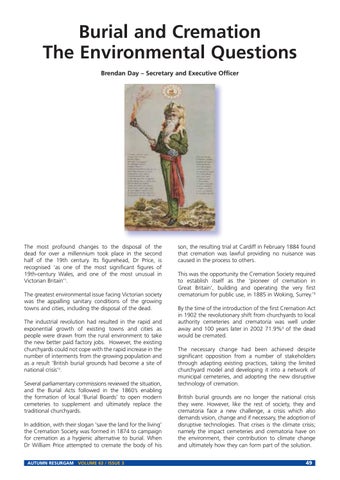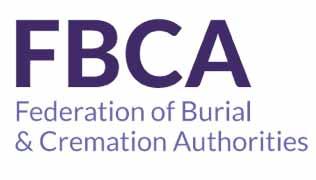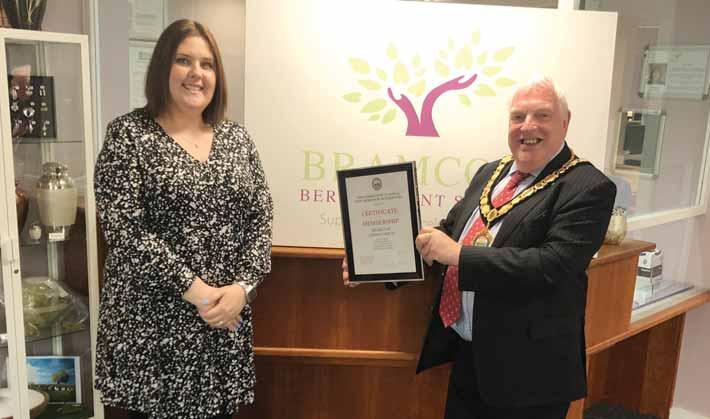Burial and Cremation The Environmental Questions Brendan Day – Secretary and Executive Officer
The most profound changes to the disposal of the dead for over a millennium took place in the second half of the 19th century. Its figurehead, Dr Price, is recognised ‘as one of the most significant figures of 19th-century Wales, and one of the most unusual in Victorian Britain’1. The greatest environmental issue facing Victorian society was the appalling sanitary conditions of the growing towns and cities, including the disposal of the dead. The industrial revolution had resulted in the rapid and exponential growth of existing towns and cities as people were drawn from the rural environment to take the new better paid factory jobs. However, the existing churchyards could not cope with the rapid increase in the number of interments from the growing population and as a result ‘British burial grounds had become a site of national crisis’2. Several parliamentary commissions reviewed the situation, and the Burial Acts followed in the 1860’s enabling the formation of local ‘Burial Boards’ to open modern cemeteries to supplement and ultimately replace the traditional churchyards. In addition, with their slogan ‘save the land for the living’ the Cremation Society was formed in 1874 to campaign for cremation as a hygienic alternative to burial. When Dr William Price attempted to cremate the body of his AUTUMN RESURGAM VOLUME 63 / ISSUE 3
son, the resulting trial at Cardiff in February 1884 found that cremation was lawful providing no nuisance was caused in the process to others. This was the opportunity the Cremation Society required to establish itself as the ‘pioneer of cremation in Great Britain’, building and operating the very first crematorium for public use, in 1885 in Woking, Surrey.’3 By the time of the introduction of the first Cremation Act in 1902 the revolutionary shift from churchyards to local authority cemeteries and crematoria was well under away and 100 years later in 2002 71.9%4 of the dead would be cremated. The necessary change had been achieved despite significant opposition from a number of stakeholders through adapting existing practices, taking the limited churchyard model and developing it into a network of municipal cemeteries, and adopting the new disruptive technology of cremation. British burial grounds are no longer the national crisis they were. However, like the rest of society, they and crematoria face a new challenge, a crisis which also demands vision, change and if necessary, the adoption of disruptive technologies. That crises is the climate crisis; namely the impact cemeteries and crematoria have on the environment, their contribution to climate change and ultimately how they can form part of the solution. 49













